Analysing the particles hitting the EPD, focusing on the separation of primary / secondary particles
As a sequel of my previous study, I've continued the work I started there. This time, I'm analysing nearly the same things, but focusing on to distinguish the primary (motherless) and secondary (with a mother) particles hitting the EPD.
----------------------------------------------------------------------------------------------------------------------------------------------------------------
Summary:
- As a "relief", electrons and neutrinos are secondary particles hitting the EPD
- For primary particles (motherless), the most occurring ones are: pions, kaons, proton, neutron, anti-proton, anti-neutron, eta and lambda
- Deposited energy peak around 0.002 keV still visible after separating primary hits from the secondary ones, the shape of the plot did not change
- Deposited energy distributions for the most frequent particles, one by one, for both primary and secondary particles, by normalising the deposited energy plots, to see the way how they deposit their energy
- The most frequent primary particles deposit their energy in nearly the same way
- Neutrinos mostly originate from +/- 5 metres in vertex z coordinates, however, some of them come from far places, like +/- 20 metres.
----------------------------------------------------------------------------------------------------------------------------------------------------------------
(1) Particle identification (PID) by differentiating primary and secondary particles

.png)
During the EPD meeting on the 18th of June, Mike expressed a strange feeling about the huge number of electrons and neutrinos. Well, as a small relief, we can see that electrons and neutrinos are secondary particle hits in the EPD, meaning they have a mother particle.
???Would it be interesting to track down (by analysing the vertex, making a PID) the mother particles of electrons and neutrinos???
----------------------------------------------------------------------------------------------------------------------------------------------------------------
(2) Deposited Energy for primary and secondary hits
When previously, in my last blog post, I made a 1D histogram about the deposited energy for all the particles hitting the EPD (I did not separate there the primary and the secondary ones), as a peak could have been seen around 0.002 keV, Mike suggested that the plot's shape is totally strange. Unfortunately, we can still see that peak when primary and secondary tracks are separated.
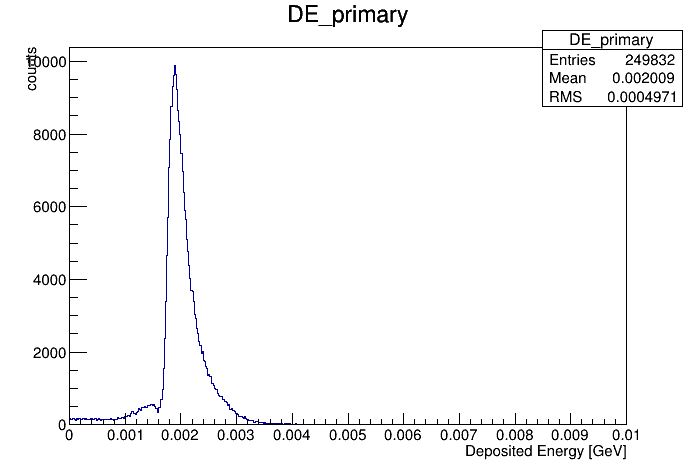
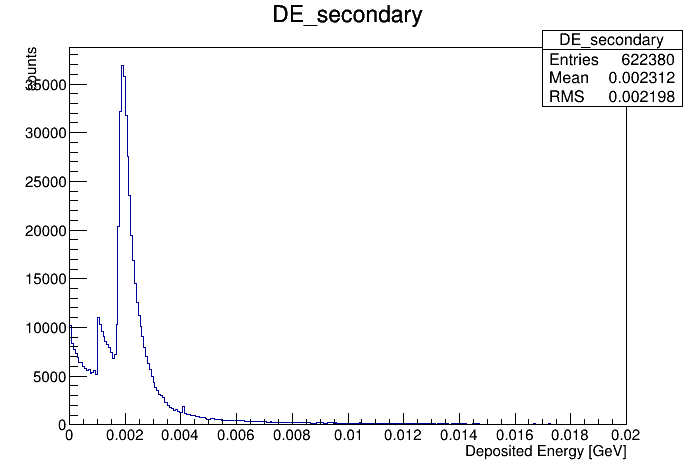
(3) Normalised DE plots
To see how each particles deposit their energy, I normalised the DE plots for the most frequent particles. The aim of normalising was the following: from the PID plots, we could see how many times did each different particles occurred, but it's more important to see the way how they deposit their energy in the detector.
I did the normalising in the following way: hist->Scale(1.0/hist->GetMaximum());
We can see that nearly all the particles' DE peaks around 0.002 keV.
(3.1) Primary particles
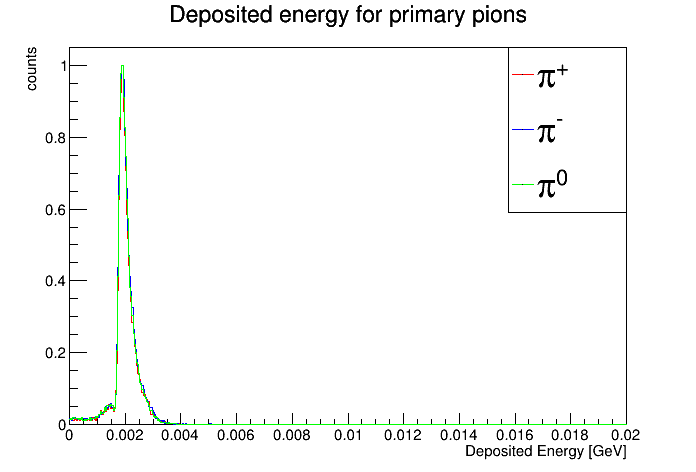


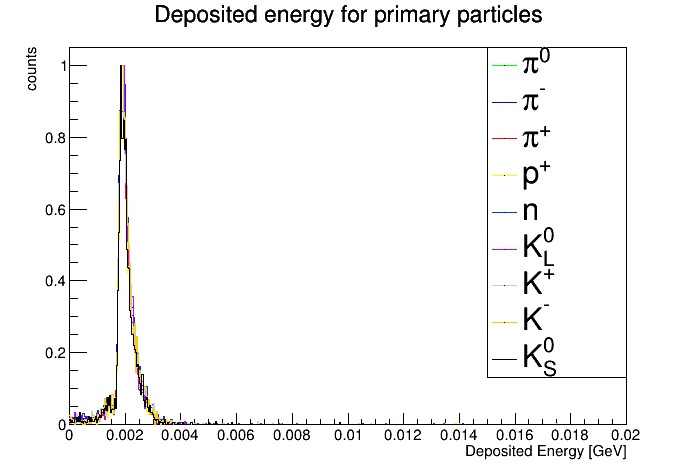
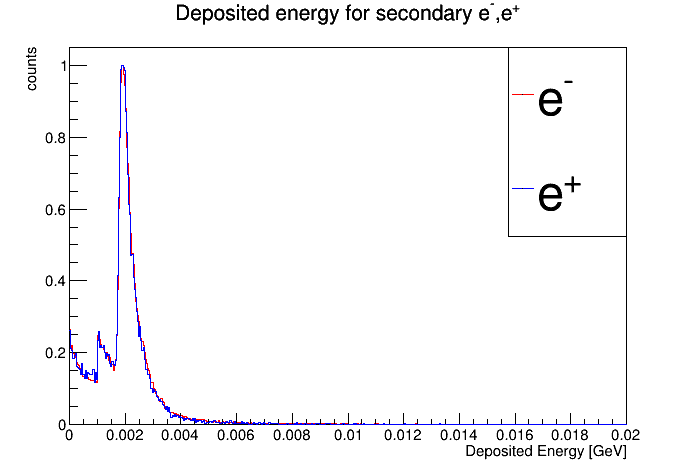
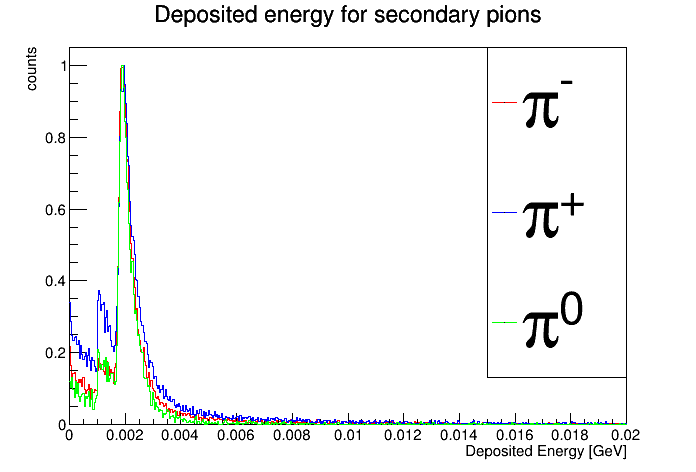
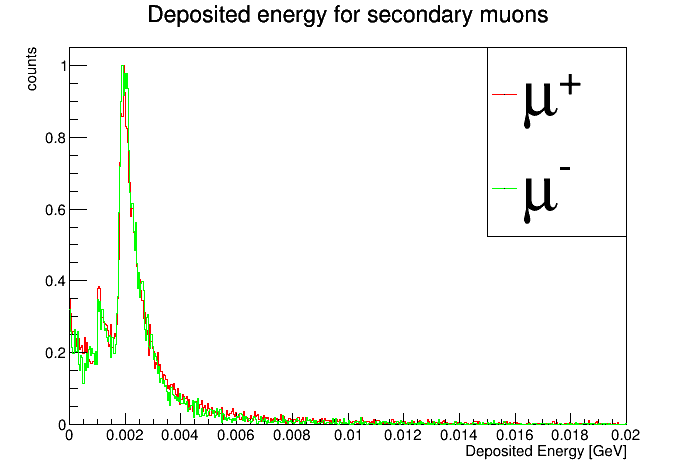

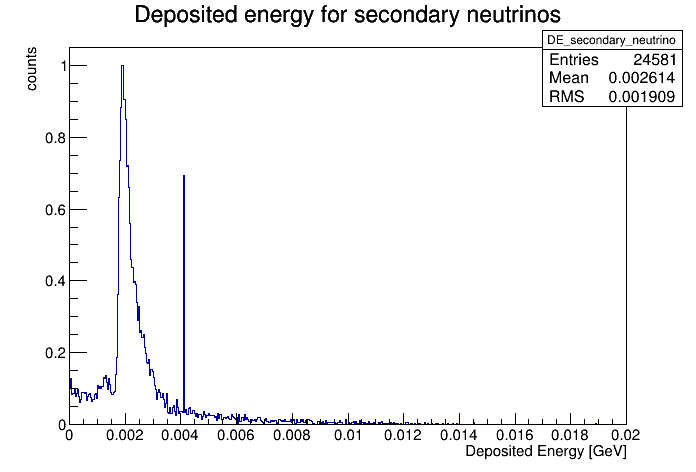
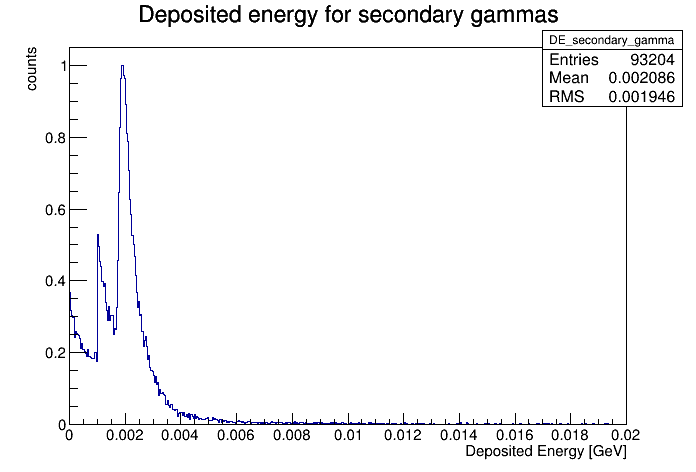
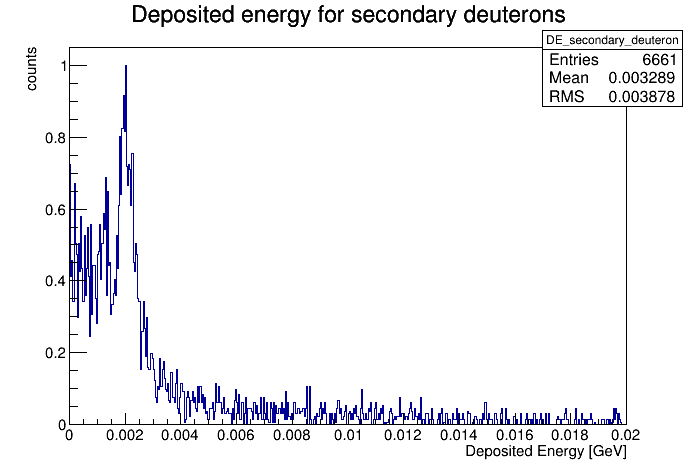
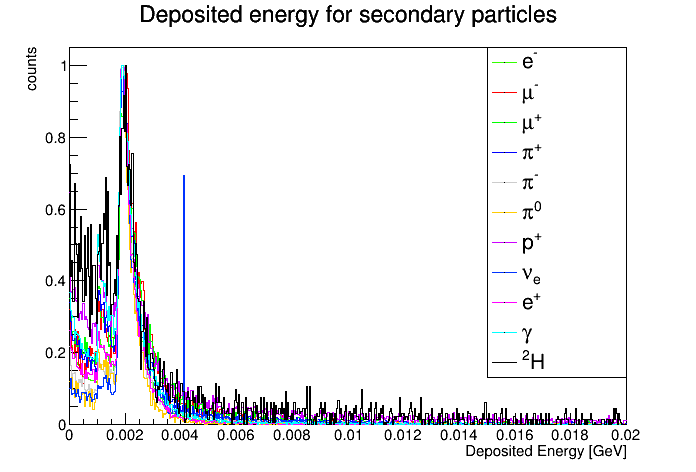
- When it comes to secondary pions, we can observe that the shape is the same, but at DE=0 the starting point differs.
- Secondary neutrinos have a strange peak at 0.004 keV.
- Deuteron's DE shape is a bit "peaky-er" than the others.
- Frotunately, alpha particles deposited more energy than protons/antiprotons/neutrons/antineutrons
----------------------------------------------------------------------------------------------------------------------------------------------------------------
During the EPD meeting on the 18th of June, Mike asked me to investigate the origin of neutrinos. Even though now we know that they are only secondary particles hitting the EPD, I still thought it would be interesting to see where neutrinos come from.
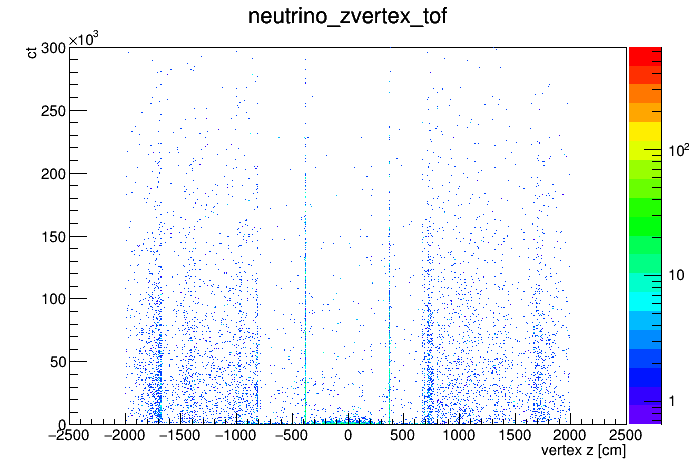
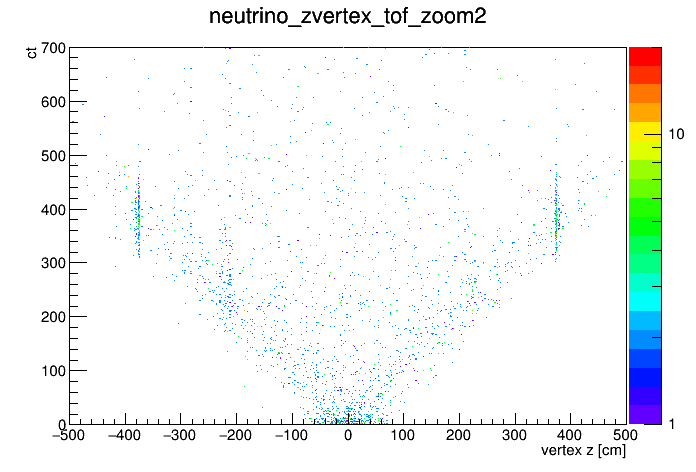
I've also made vertex x-y plots for neutrinos, with 3 different zoom cuts:
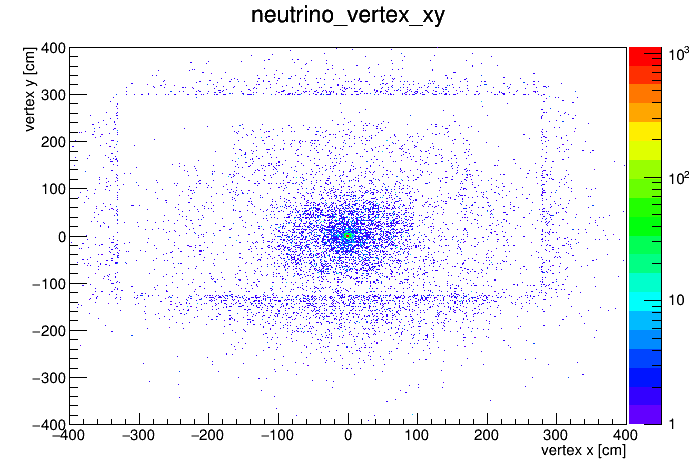
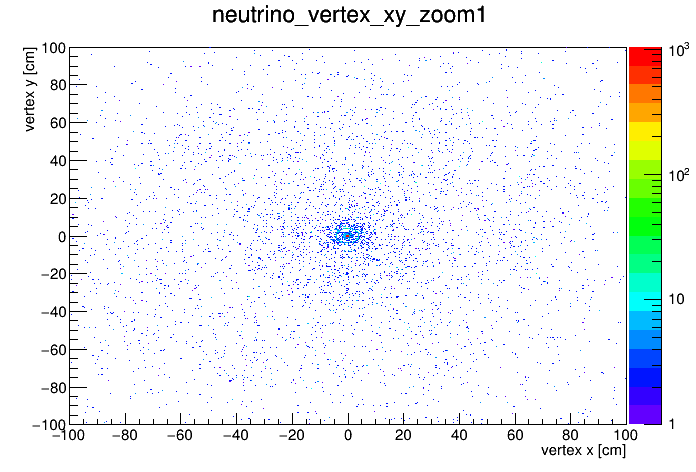
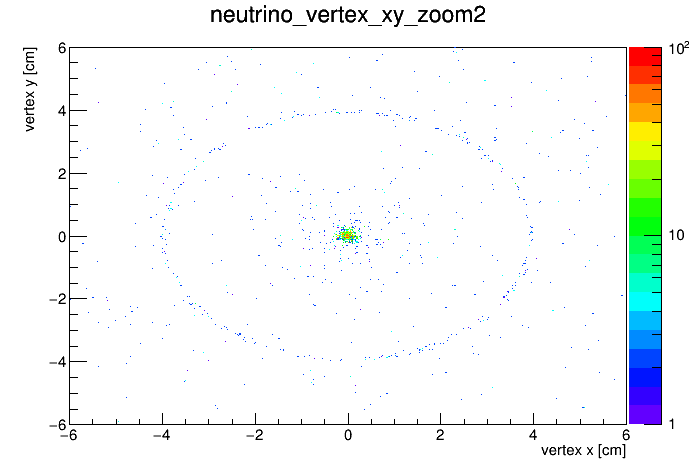



----------------------------------------------------------------------------------------------------------------------------------------------------------------
- rolandp's blog
- Login or register to post comments
